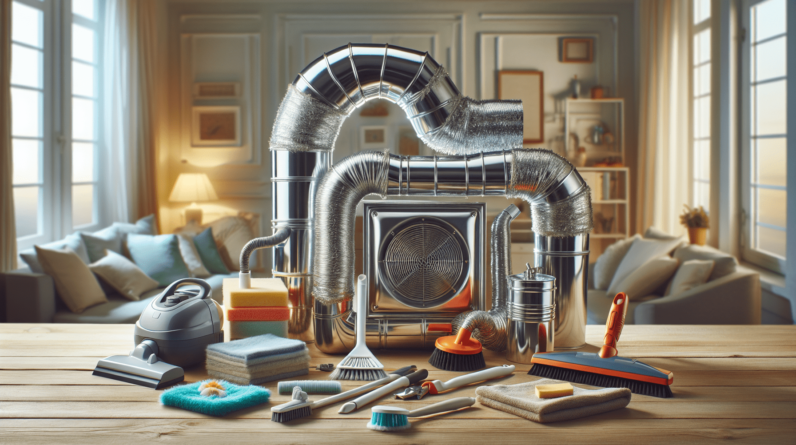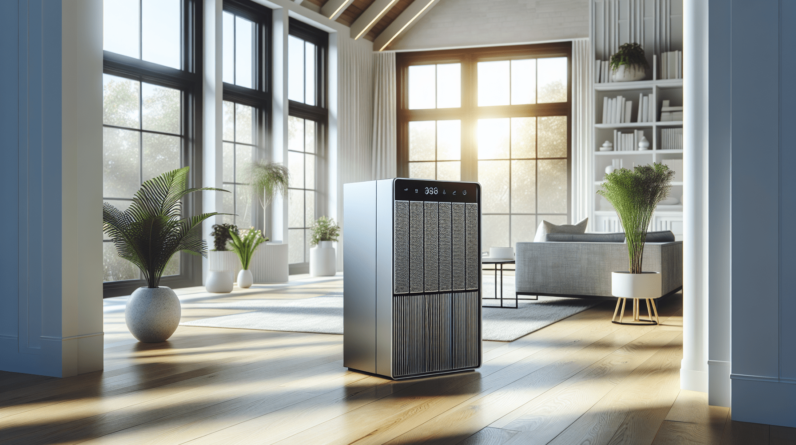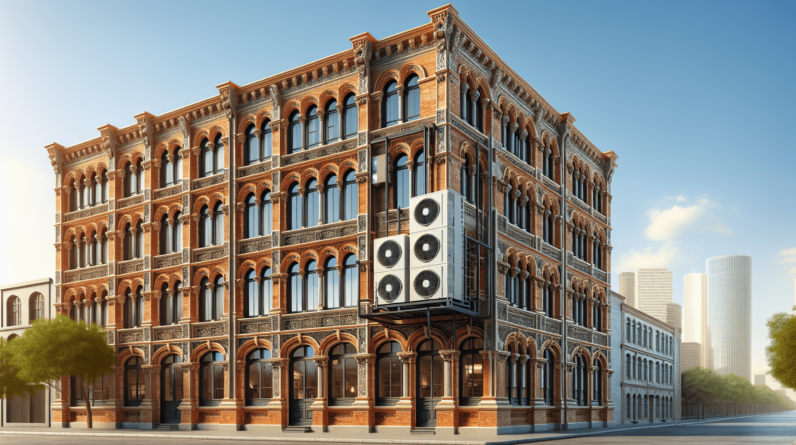

Have you ever found yourself sweating inside your motorhome while trying to enjoy your adventure? It’s a common scenario, especially during the summer months. Thankfully, a motorhome air conditioner could be the solution you’ve been searching for.

What is a Motorhome Air Conditioner?
A motorhome air conditioner is a cooling unit specifically designed for use in recreational vehicles (RVs) and motorhomes. Unlike standard air conditioners, which are usually suited for stationary homes, motorhome air conditioners are built to withstand vibration and movement while providing effective cooling in a compact environment. They come in various types and sizes, catering to different needs and preferences.
Types of Motorhome Air Conditioners
When selecting an air conditioner for your motorhome, you’ll find several types available. Understanding these variations will help you make an informed choice.
Rooftop Air Conditioners
Rooftop air conditioners are the most common type found in motorhomes. They are mounted on the roof and generally provide powerful cooling. They can effectively cool larger spaces and are relatively easy to install. However, remember that they might increase the height of your vehicle, which can affect clearance in certain locations.
Advantages:
- High cooling capacity
- Space-saving design inside the vehicle
- No need for additional ductwork
Disadvantages:
- Potential height clearance issues
- Can be noisy during operation
Portable Air Conditioners
Portable air conditioners are versatile units that can be moved around the interior of the motorhome. They require venting to the outside, typically through a window. While they provide flexibility, they might not cool as effectively as rooftop models.
Advantages:
- Can be moved to different areas
- Easier installation without roof modifications
Disadvantages:
- Might take up valuable interior space
- Less efficient cooling in larger RVs
Split Air Conditioners
Split air conditioners consist of an indoor and outdoor unit, connected through refrigerant lines. They are quieter than rooftop units and can provide effective cooling over larger areas. However, installation can be more complicated and may require professional help.
Advantages:
- Quieter operation
- Flexible installation options
Disadvantages:
- More expensive due to installation complexity
- Takes up exterior space
Window Air Conditioners
Window air conditioners can also be an option if your motorhome has suitable windows. These units are designed to fit in windows and can be a low-cost alternative to other types. However, they might not be practical for most motorhomes due to the design and space constraints.
Advantages:
- Cost-effective
- Easy to install in compatible windows
Disadvantages:
- Limited size and cooling capacity
- Potential security risks
How to Choose the Right Motorhome Air Conditioner
Selecting the ideal air conditioner for your motorhome involves considering several factors. An informed decision will ensure comfort and efficiency during your travels.
1. Size and Cooling Capacity
The cooling capacity of an air conditioner is measured in British Thermal Units (BTUs). The larger your motorhome, the more BTUs you will require. A good rule of thumb is to have around 20 BTUs per square foot of living space. Determining the area of your motorhome will help you choose a unit that can keep you cool without wasting energy.
2. Power Source
Motorhome air conditioners may run on either 12V or 120V power. Consider your power system and ensure compatibility with the air conditioner. If you often camp in areas without electrical hookups, a 12V model could be advantageous.
3. Noise Level
Noise can be a major deciding factor, especially if you enjoy peace during your travels. Look for models with low decibel ratings if noise is a concern for you. Reading user reviews can provide insight into how quiet a unit truly is.

4. Energy Efficiency
Air conditioners can consume a significant amount of energy, so choosing an energy-efficient model can save you money in the long run. Look for the Energy Efficiency Ratio (EER) rating, with higher values indicating more efficient units.
5. Additional Features
Consider any additional features you might want, such as:
- Programmable thermostats for better temperature control
- Remote control for convenience
- Built-in dehumidifiers to remove excess moisture from the air
Installation and Maintenance of Motorhome Air Conditioners
Once you’ve chosen the right air conditioner for your motorhome, it’s important to install and maintain it properly to ensure optimal performance.
Installation Tips
Roof-mounted Air Conditioners
- Choose the Right Location: Find a flat area on the roof of your motorhome.
- Prepare the Roof: Clean the area and ensure it’s free from debris.
- Secure the Unit: Follow the manufacturer’s instructions for mounting, using weatherproof seals and screws to prevent leaks.
- Check for Proper Ventilation: Ensure that the unit has adequate airflow and is free from obstructions.
Portable and Window Air Conditioners
- Follow the Instructions: Read the manufacturer’s guidelines for installation.
- Secure Venting: For portable units, ensure that the exhaust hose is securely attached to the window or vent.
- Level the Unit: Place the air conditioner on a flat surface for optimal performance.
Maintenance Tips
Proper maintenance can prolong the lifespan of your motorhome air conditioner and ensure it runs efficiently.
Regular Cleaning
- Filters: Clean or replace air filters every month when in use. Dirty filters can block airflow and strain the system.
- Coils: Check and clean the evaporator and condenser coils periodically to prevent buildup of dirt and debris.
Seasonal Preparation
- Cover the Unit: If your air conditioner will not be in use for a prolonged period, consider covering it to protect it from the elements.
- Inspect Wiring and Connections: Ensure all electrical components are in good condition to prevent malfunction when you need them most.
Troubleshooting Common Issues
Even the best motorhome air conditioners can experience issues from time to time. Here are some common problems and troubleshooting tips.
The Air Conditioner Isn’t Cooling
If your air conditioner is running but not providing adequate cooling, check the air filters. Dirty filters can restrict airflow. If cleaning them doesn’t help, you might have a refrigerant leak, which requires professional service.
Unusual Noises
If you hear strange noises coming from your air conditioner, it could indicate a loose part, debris caught in the fan, or a malfunctioning motor. Inspect the unit for any visible issues, and consult a technician if necessary.
Water Leaks
Water leaking from the air conditioner could point to a clogged drainage system. Inspect the unit’s drainage components and clean them if needed. If the problem persists, consider calling a technician.
Using Your Motorhome Air Conditioner Efficiently
To get the most out of your air conditioner while minimizing energy consumption, consider these tips.
Set the Thermostat Wisely
Setting the thermostat a few degrees higher can not only save energy but also maintain comfort. Aim for a temperature around 75°F when you’re inside as this is typically a comfortable range without straining the unit.
Use Fans
Ceiling fans or portable fans can help circulate cool air throughout your motorhome. This allows you to set the air conditioner at a higher temperature while still feeling comfortable.
Optimize Insulation
Improving your motorhome’s insulation can limit the cool air from escaping. This not only makes your air conditioner work less but also contributes to energy savings. Consider using thermal curtains or window covers to reduce heat gain.
Monitor Sun Exposure
During the day, windows can significantly raise indoor temperatures due to sunlight. Use reflective window films or sunshades to minimize heat buildup and alleviate the burden on your air conditioner.
Plan Your Stops
If you’re camping in an area with ample shade, park your motorhome under trees or structures when possible. This will naturally keep temperatures lower inside your vehicle.
Conclusion
A motorhome air conditioner can turn your travels into a comfortable experience, even under the blazing sun. By understanding the types available, making an informed choice, and maintaining it properly, you can enjoy refreshing air while on the road. Remember, the right setup leads to memorable adventures.
With proper care, your air conditioner can be a reliable companion in your motorhome, making every journey enjoyable, no matter the weather. So, think ahead and stay cool; your future adventures depend on it!







